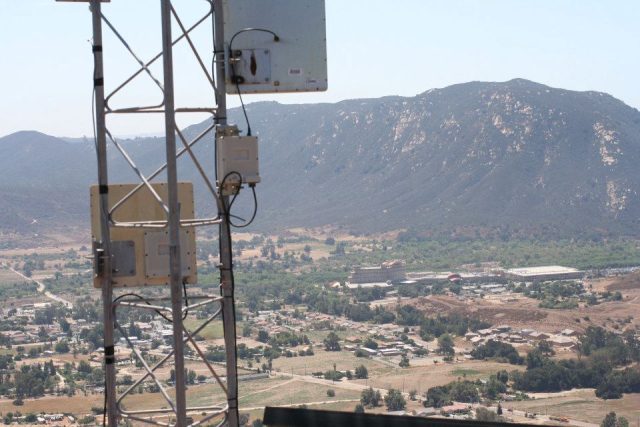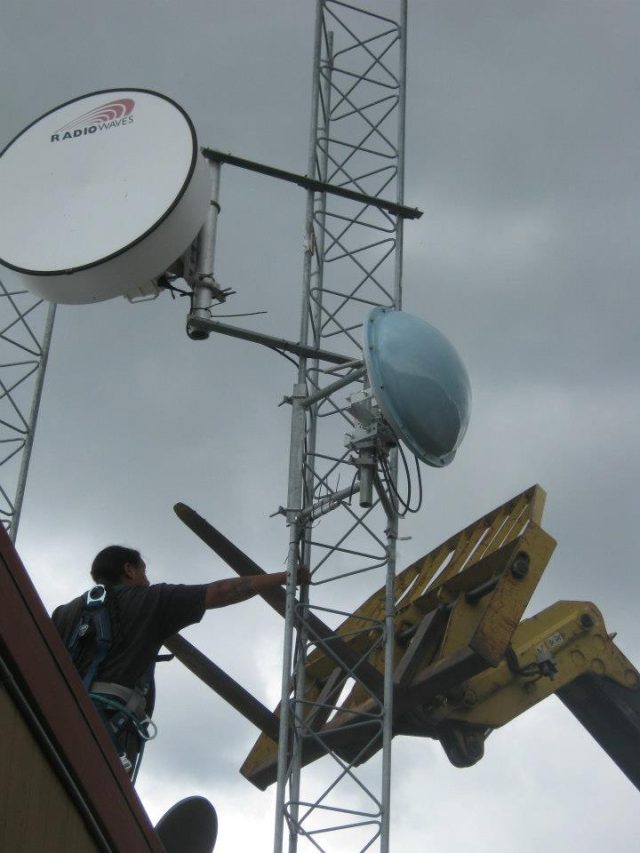
Recently, Sam Tenakhongva, a teacher living on the Hopi reservation in northern Arizona, bought a Chevrolet pickup truck equipped with integrated 4G LTE. As the company’s advertising boasts, the feature was novel for a commercial vehicle and unprecedented for a truck. Intrigued, Tenakhongva decided to take advantage of a free trial.
It didn’t take long for him to eschew the service. The truck only connected when Tenakhongva was in a 4G network and, given the region’s limited broadband access, Tenakhongva knew such an occurrence would be too rare to justify the cost.
Today, this situation rings true for an overwhelming majority of American Indians living on reservations. This year, the Federal Communications Commission reported that 41 percent of Americans living on tribal lands lacked access to broadband (which the FCC currently defines as 25Mbps for downstream speeds and 3Mbps for upstream speeds); that number leaps to 68 percent for those in rural areas of tribal lands.
Though cause for consternation, these numbers mark an improvement in recent years thanks partially to a series of governmental initiatives. In 2010, the FCC released the National Broadband Plan, an effort to narrow the “digital divide”—and the related opportunity gap—between urban and rural America. As a directive of the plan, the Office of Native Affairs and Policy (ONAP) started as a policymaking body devoted to channeling those efforts into tribal communities. Last year, the Obama Administration instituted the ConnectHome effort, a project to bring high-speed Internet to a list of rural areas including the Choctaw Nation. Since the dawn of these efforts, the number of connected American Indians has nearly tripled.
Relative progress isn't enough, however, and transformative change is far from swift. In this case, in fact, progress is behind schedule. In the aforementioned FCC report, the commission admitted that national broadband deployment was “not keeping pace,” alluding to the numbers mentioned above. What accounts for the lag?
One popular explanation is terrain. American Indian reservations are often located in remote, mountainous regions with extreme variations in elevation. Historically, carriers have dismissed the prospect of installing cables in these areas—particularly underground—fearing the process of digging and laying fiber would be arduous, time-consuming, and expensive.
“When they made the reservation system in the federal government, they decided to put Indians where they thought nobody would want to be,” Matt Rantanen, director of technology for the Southern California Tribal Chairmen's Association , told Ars. “They sent them to locations at the base of mountains or out in remote areas where the non-tribal population centers were, and they’re far away from communication centers, where it’s not advantageous to deploy infrastructure.”

Another impediment is low population density. In a 2015 testimony before the House of Representatives, Stephen Roe Lewis, the governor of the Gila River Indian Community in Arizona, noted a rate of 20 people per square mile (“other tribal nations are even lower,” he followed). Rantanen estimates the cost of laying fiber ranges from $10,000 to $50,000 per mile, depending on such factors as easements and topography. With such a limited potential subscriber base, major ISPs see no possibility for a return on investment.
To make matters worse, those who are interested in paying for Internet access might not have the wherewithal to do so. In 2012, approximately 26 percent of American Indians were living in poverty. According to the 2010 census, the median income for American Indian and Alaska Native households was $35,062 compared to the national median income of $50,046. That $35,062 figure only accounts for the incomes of American Indians and Alaska Natives not living on tribal lands; were it to solely reflect the incomes in Indian country, it would likely be notably lower. In 2015, the Gila River reservation’s figure was $24,771 for example, and 48 percent of residents there lived below the poverty line. Under conditions like these, monthly Internet fees of up to $70 are a burden at best.
Tribal regulations also pose a unique set of challenges. As sovereign nations, tribal lands require that telecommunications providers meet certain criteria to protect the land and culture, and most national carriers aren’t interested in complying with additional rules on top of the regular bureaucracy they navigate.
“If a company wants to put [fiber] in, they could see significant hurdles in terms of consulting with the tribes,” Traci Morris, director of the American Indian Policy Institute at Arizona State University, told Ars. “They’d have to consult the sovereign government. They’d have to do environmental protection studies to put in lines. They’d have to do historic preservation studies. They also have to go through the Bureau of Indian Affairs, which oversees tribal lands as a whole.”
“They’re not interested because it’s not low-hanging fruit,” Rantanen added. “It’s not easy for them.”
Intertwined with much of this is the issue of data collection. While the census provides most of the demographic data for the American Indian population, much of it lumps information about Indians living on tribal land with those in urban areas as well as Alaska Natives. This limits the representation of reservation-dwelling groups (see the 2010 median-income figure above). Additionally, American Indians constitute less than 1.5 percent of the American population according to the most recent Census. When coupled with the dispersed nature of tribes, this discourages organizations like the Pew Research Center from gathering additional information. What's more, data given to the FCC by ISPs is often biased in the companies’ favor. “If a carrier serves one household in a zip code, they say the whole area’s covered,” Morris said.
In response to these issues, many tribes and advocacy groups are taking matters into their own hands. Organizations like Native Public Media have collected data in recent years for tribal broadband penetration and use. Nine tribes throughout states including Oregon, Arizona, and South Dakota operate proprietary telecommunications companies offering broadband service to most, if not all, of their reservations. The Coeur d’Alene tribe in Idaho has built a major infrastructure, and similar efforts are happening among other groups, including the Navajo in Arizona, the Fond du Lac in Minnesota, the Nez Perce in Idaho, and California’s Karuk and Yurok tribes. The Southern California Tribal Chairmen’s Association, Rantanen said, has constructed access-point towers and connected hundreds of homes in 12 of the 17 tribal communities in San Diego County, achieving a 50 percent penetration rate through its Tribal Digital Village program. (Though an ultimate success, this is the fruit of years of price negotiation with bandwidth providers like AT&T. "Getting the bandwidth was like pulling teeth," Rantanen said.)
As reliable broadband reaches more of the US, it’s hoped the opportunity gap separating Indian country from urban America will begin to diminish. Tribal populations are young and accustomed to evolving technologies (the National Congress of American Indians reports that the median age for American Indians on tribal lands is roughly 26). Tribal leaders have also been taking advantage of ONAP-hosted broadband consultations and training workshops for years, engaging in discourse about how to bring economic growth to their communities.
“We’re talking the ability for folks to have online telecommuting jobs. We’re talking the potential for online degrees and education. We’re talking the ability to have an Etsy site for your arts and crafts or to run a Web-based business,” said Morris. “Those impacts have yet to be broadly felt in Indian country, but we know those opportunities are there.”
Tribal participation, however, is only part of the equation. To combat the ingrained resistance of major providers and stabilize the fluctuating momentum of federal initiatives, years of collaborative, multi-pronged efforts must lie ahead.
“It’s really an awareness thing—building up the tribal knowledge base and trying to teach the companies that when they’re passing the reservations, it’s an opportunity for revenue,” Rantanen said. “Give everybody an opportunity. It’s just generally getting everybody on the same page of trying to help, not cheat, the system.”
Julianne Tveten is a journalist specializing in science, technology, and social equity. She's previously contributed to Ars on a variety of topics, including naming CSS colors, drone education, and open-source voting.
reader comments
35